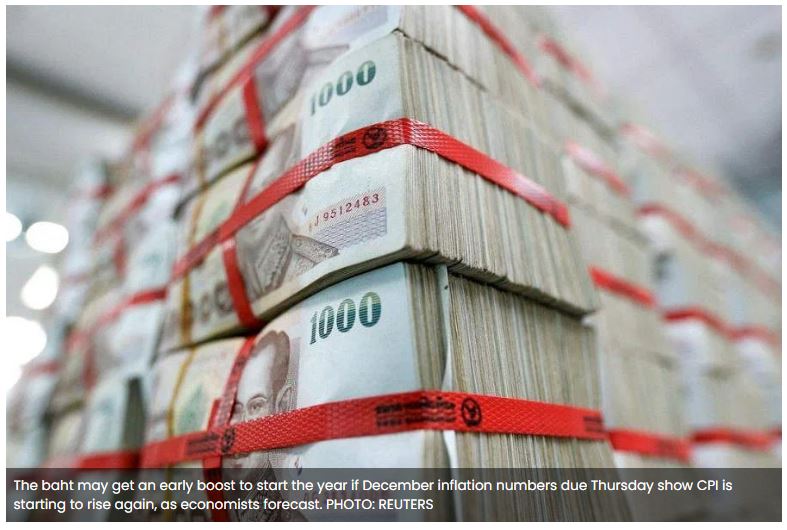Singapore dollar to tussle with baht for best regional currency
THE race to be South-east Asia’s best-performing currency in 2023 looks like being between the Thai baht and Singapore dollar.
The baht is set to be powered by an influx in Chinese tourists after the mainland rescinded most of its Covid controls over the past month, paving the way for a recovery in outbound travel. The mainland is also Thailand’s biggest export market so the efforts by the world’s second-largest economy to bolster growth should help too.
The baht may get an early boost to start the year if December inflation numbers due Thursday (Jan 5) show CPI is starting to rise again, as economists forecast. The Bank of Thailand has already said it expects to keep raising interest rates through the first half of 2023, and any upside surprise in the data may see markets price in a longer tightening cycle.
The Thai currency should also benefit along with its Asian peers as the Federal Reserve slows the pace of its own rate hikes, pushing down the dollar, says Christopher Wong, a foreign-exchange strategist at OCBC Bank Singapore.
“The baht is likely to lead gains among Asia ex-Japan for 2023 on the China reopening thematic, slower Fed hikes and a moderate-to-soft US dollar profile,” Wong said. “Domestic growth will be supported by sustained recovery in tourism.”
Steeper slope
The other potential winner in the region is the Singapore dollar, which was the only Asian currency to appreciate against the greenback last year.
The Sing dollar, as it is known, benefited from policy tightening by the monetary authority, which re-centred the midpoint of its exchange rate band higher three times in 2022 to fight inflation. Further tightening can’t be ruled out as core inflation remained above 5 per cent in November despite the tighter policy settings.
“The Singapore dollar should remain resilient on the back of macro fundamentals and China reopening optimism,” OCBC’s Wong said. “The case for further MAS tightening is still plausible if inflationary pressures in Singapore continue. But it could be a case of slope steepening to anchor medium-term inflationary expectations.”
The other main regional currencies are beset with negatives which mean they are unlikely to match the two likely front runners.
The Indonesian rupiah is set to struggle as the central bank has already signalled its hiking cycle may be nearing its end. The Philippine peso is set to be weighed down by the nation’s trade deficit, while Malaysia’s ringgit is losing its tailwind as the outlook for commodity prices worsens. BLOOMBERG


 Thailand
Thailand




